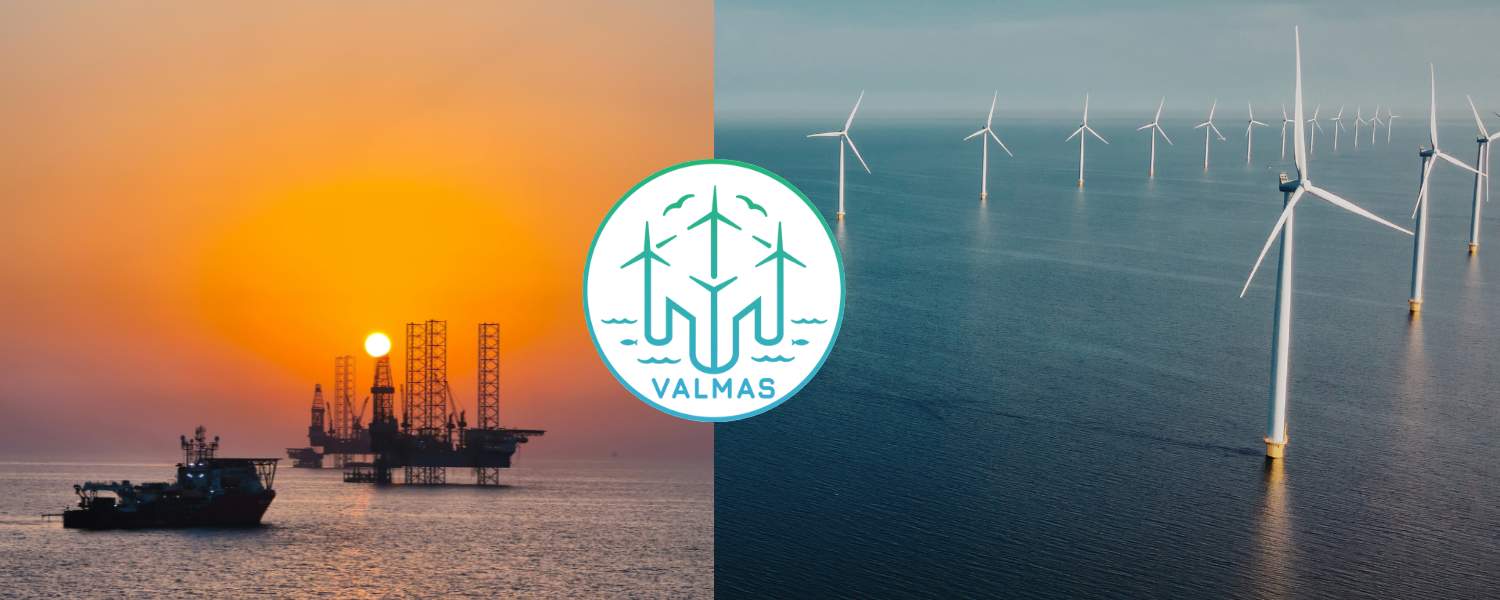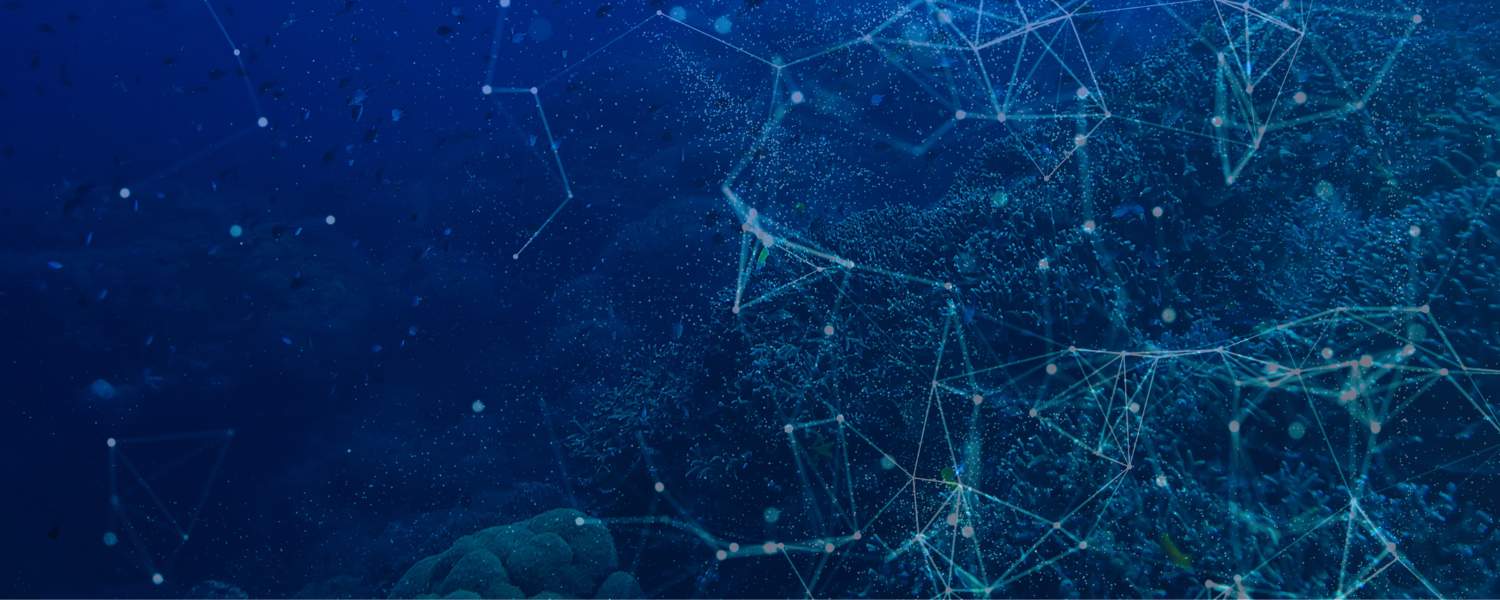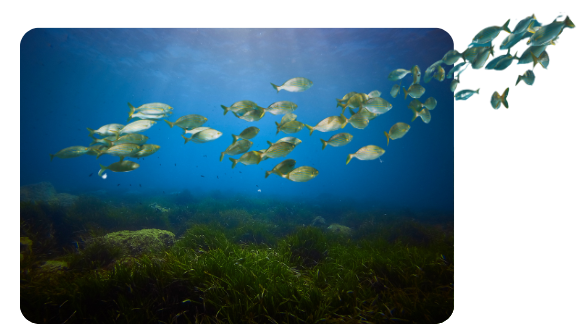Projects
At any one time, PML is undertaking around 100 research projects with science and interests stretching from local to global, from lakes to oceanic environments. We collaborate in research projects across the world, and the length and breadth of the global ocean from the poles to the tropics.

Our strategic research feeds into national and international strategies such as for the UK and other governments or regulators, and maps onto strategies of public sector bodies, space agencies, charitable foundations and philanthropists, NGOs and industry.
Here you can find a selection of our current and archived projects:

Valmas: Valuing Marine Artificial Structures
VALMAS is a £5.6 million UK research programme that examines how marine artificial structures, such as offshore wind turbines and oil and gas platforms, interact with marine ecosystems and society. Plymouth Marine Laboratory is a key project partner, with Dr Steve Watson as Deputy Project Lead, contributing evidence and tools to support sustainable offshore energy development.

Deep Vision: AI-enabled Mapping of Vulnerable Marine Ecosystems in the Atlantic
C0-led by Plymouth Marine Laboratory and the University of Plymouth, this project uses artificial intelligence and high-resolution seabed data to map vulnerable marine ecosystems across the Atlantic Basin. The resulting evidence supports the design of legal protections for deep-sea biodiversity, including on the high seas.

Coral Cartography: Mapping Atlantic Cold-Water Corals to support Area Based Management
Coral Cartography uses deep-sea imagery to map the distribution and density of cold-water corals across the Atlantic Ocean. By combining marine ecology, environmental data and AI-enabled analysis, the project delivers new evidence to support the protection and sustainable management of vulnerable deep-sea ecosystems.

DEAL: DEcentrAlised Learning for automated image analysis and biodiversity monitoring
DEAL will create an application that allows owners of biological image data to participate in decentralised, collaborative networks, where they can leverage the data and expertise of all participants to obtain better, higher efficacy classification results for their data.

WADIM: Water-Associated infectious Diseases in India: digital Management tools
WADIM aims to develop a multi-layered digital tool to map sanitation conditions and occurrence of disease and changes therein, especially in the event of flooding due to monsoon rainfall or natural disasters.

CHALKY: Coccolithophore controls on ocean alkalinity
The CHALKY project aims to determine how coccolithophore calcium carbonate production, recycling and export from the surface ocean affects air-sea CO2 fluxes and the ocean’s carbon sink, and how this may change in a warming ocean.

C-BLUES: Carbon sequestration in BLUe EcoSystems
The C-BLUES project aims to significantly advance knowledge and understanding of blue carbon ecosystems (BCEs) – seagrasses, tidal marshes, mangroves and macroalgae – to reduce scientific uncertainty, improve reporting of blue carbon, and promote the role of blue carbon in delivering climate policy commitments.

Ocean ICU: Improving Carbon Understanding
The Horizon EU OceanICU is a five year project that seeks to gain a new understanding of the biological carbon pump and its processes in order to provide fundamental knowledge and tools to help policy makers, regulators and Ocean industry–fishing and mining, along with the wider blue economy–manage and understand the impact of their actions on Ocean carbon. This will ultimately lead to a better approach for addressing climate change in alignment with the EU Green Deal to reduce the net emissions of greenhouse gases to Zero by 2050.

Monitoring Integrated Digital Support Tool – for CO2 and hypersaline brine monitoring applied to UK
In MIDST-UK, an open source, user friendly, pre-operational Decision Support Tool (DST) will be extended to also included brine release (high salinity, high temperature and varied contaminants) for impact assessment, monitoring, and detection criteria. Case studies are then to be developed within potential UK CCS sites, where the DST can design a site-specific marine monitoring program that ultimately enables operators and regulators to quantifiably assess proposed monitoring strategies deliver an acceptable standard of assurance for stakeholders.

Smart AUVs for detection and quantification of greenhouse gas seepage in the oceans
SmartAUVs will dramatically improve the monitoring capabilities of AUVs, by applying artificial intelligence (AI) in concert with specialized signal processing techniques to enable AUV decision autonomy, i.e., the ability to take intelligent action in real time based on sensor input, enabling sound management of marine activities, strengthened confidence in safe CO2 storage, and insights into the amount of CH4 entering the oceans through natural- and industry related processes.

LandSeaLot: Land-Sea interface: Let’s observe together!
Monitoring the complex land-sea interface is critical for managing pollution, carbon fluxes, biodiversity, and other challenges driven by human and climate pressures. The 4-year LandSeaLot project will strengthen observational capabilities in this dynamic zone through integrated in situ measurements, satellite observation, and modelling.

EuroGO-SHIP: Enhancing Ocean Observations
The EuroGO-SHIP project aims to enhance the quality, integration and sustainability of ship-based hydrographic data collection across Europe.

TYRE-LOSS: Lost at Sea – where are all the tyre particles?
Tyre particles are increasingly recognised as a potentially major source of microplastic pollution, yet limited data exists on their accumulation and risks in the marine environments. The TYRE-LOSS project is tackling this critical knowledge gap.

FOCUS: Future States of the global Coastal ocean: Understanding for Solutions
The Future states Of the global Coastal ocean: Understanding for Solutions (FOCUS) project is working to understand how climate change and human activities are impacting coastal seas worldwide.

BIO-PLASTIC-RISK: Biodegradable Bioplastics – Assessing Environmental Risk
Biodegradable bioplastics (BBPs) offer promising solutions to the global plastic pollution challenge. However, our understanding of their fate in the natural environment and potential environmental effects is limited. The Bio-Risk Plastic Project brings together experts from various fields to comprehensively investigate BBPs.

HyperBOOST – Hyperspectral Bio-Optical Observations Sailing on Tara
Marine ecosystem health in coastal areas can be challenging to monitor using Earth Observation due to their optical complexity. HyperBOOST will address this by using in-situ hyperspectral bio-optical measurements for the validation of satellite data, useful to develop marine coastal biodiversity products when combined with biological measurements from the TARA-TREC expedition. HyperBOOST is an international collaboration between PML (UK), CNR (IT), LOV (FR) and U Maine (USA), supported by the European Space Agency (ESA).

ProBleu: Promoting ocean and water literacy in school communities
ProBleu aims to mobilise and engage students, school communities, and the wider community across the EU and associated countries to enhance understanding, stewardship, and literacy about oceans and waters, with a focus on restoring them by 2030 and growing the Network of European Blue Schools.

Plymouth Marine Laboratory (PML) is a partner in a major five-year £13.8 million research programme, named “AgZero+’, to support the UK’s transition towards home-grown food production that is sustainable, carbon-neutral and has a positive effect on nature.

With the development of the blue economy, and shift to offshore renewable energy thousands of man-made structures (MMS) have been installed around the world. With the potential for these MMS to have significant pressures and effects on marine ecosystems at all stages of their life cycle – installation, operation and decommissioning – the effects are currently not wholly understood or agreed on scientifically.

EcoNex – The marine energy, biodiversity and food nexus
The UK has plans to increase offshore wind capacity to 50 GW by 2030. This will require an understanding of the trade-offs between climate change and the multiple uses of marine natural resources. EcoNex is working with renewable industry and policy bodies to enable evidence-based, informed actions to improve decision making when balancing environmental, social, and economic impacts, ensuring marine net gain as part of national policy assessments.

Marine Social and Natural Capital Laboratory
Launching the first Marine Social and Natural Capital Laboratory of its kind, linking social and natural sciences enabling data for ground-breaking research into sustainable use, human well-being and ecosystem services. In fact, this new laboratory provides the perfect testbed for novel and transformative research applying ecological, psychological and economic research approaches coupled with cutting edge digital methods.

The Automated, in situ Plankton Imaging and Classification System (APICS) will radically improve the understanding of how environmental changes are affecting plankton, the microscopic organisms at the foundation of the marine food chain.


Environmental Monitoring at Calstock flood defence improvement scheme
Measuring the effects of new Calstock intertidal wetland on water biogeochemistry

PELAgIO – Physics-to-Ecosystem Level Assessment of Impacts of Offshore Windfarms
The PELAgIO project will explore the impacts of offshore wind development across all levels of the food chain, looking at the predicted changes across a range of scales – from plankton productivity to the availability of prey for top predators, as well as broader consequences at the ecosystem level.

UKERC – Energy, Environment, and Landscapes theme
This theme will apply ecosystem service and natural capital approaches to understand the environmental implications of changes in the UK energy system. Using a range of spatially resolved approaches, it will provide new tools for decision-makers that allow them to take a whole-systems perspective to help maximise societal benefits.

MOET – Managing the Environmental Sustainability of the Offshore Energy Transition
MOET will assess the environmental sustainability of offshore wind, blue and green hydrogen, and carbon capture and storage for selected test areas of the UK offshore, and will develop solutions for planning the technology and infrastructure of the offshore energy transition. It will also assess public understanding and acceptance of those technologies.

TerraFIRMA: Future Impacts, Risks and Mitigation Actions in a changing Earth system
Global climate change is the leading environmental challenge facing humanity today. Reliable guidance on the risks and impacts of future climate change, and clear assessment of mitigation options for limiting future change, are urgently required. Through the TerraFIRMA programme we will deliver: novel future climate projections, investigating the risks and impacts associated with overshooting key global warming targets and the reversibility of any triggered changes and impacts. an assessment of the leading mitigation options available to limit future climate change, while considering other policy goals such as air quality, human health and food security.

NextOcean co-developing a suite of Earth observation-based services for sustainable fisheries and aquaculture.

Biodiversity in the Open Ocean: Mapping, Monitoring and Modelling (BOOMS)
Increasing pressure due to anthropogenic drivers is leading to a reduction of global biodiversity and its associated benefits at the planetary scale. In open ocean (seafloor depth greater than 200 m) the most important direct drivers of biodiversity loss is fishing and extraction of seafood, with a lesser but rapidly increasing importance of climate change, pollution and invasive species. These drivers have accelerated in the last 50 years and they are predicted to continue, despite international efforts in the last decades. To guide further action, it is, therefore, urgent and important to develop “fit-for-purpose” observation tools. These observations should be capable of assessing and monitoring how the community structure and function of coastal ecosystems respond to the anthropogenic and natural drivers in a changing climate.

MSPACE: Marine Spatial Planning Addressing Climate Effects
MSPACE is a 3 year project designed to drive forward the capability of the four UK nations in designing and implementing climate-smart marine spatial plans.

Biodiversity of the Coastal Ocean: Monitoring with Earth Observation (BiCOME)
BiCOME will develop a better understanding of how the community structure and function of coastal ecosystems will respond to the anthropogenic and natural drivers in a changing climate.

COMFORT will identify tipping point in future marine ecosystems induced by climate change and the associated multiple stressors. The impact of these tipping points on ecosystems will then be assessed and the safe operating space to avoid them identified.

Water-ForCE: Water scenarios For Copernicus Exploitation
Water-ForCE is co-creating a Roadmap for the development of the next phase of Copernicus Inland Water Services with the space sector, research community, policy, industry and third sector. This will guide the user community and enhance the uptake of satellite-derived water quality and quantity products.

SEAMLESS: Services based on Ecosystem data AssiMiLation: Essential Science and Solutions (SEAMLESS)
SEAMLESS aims at improving the current European capability to simulate and predict the state of marine ecosystems.

FutureMARES: Climate Change and Future Marine Ecosystem Services and Biodiversity
FutureMARES is examining the relations between climate change, marine biodiversity and ecosystem services.

FRONTAL: Satellite FRONTs for detection of Anthropogenic plastic Litter
Fronts in coastal and oceanic regions are hot-spots for rich and diverse marine life, where floating marine debris also tends to accumulate. FRONTAL is developing a prototype for identifying areas at risk of accumulating plastic pollution to aid management of these areas.

SCIPPER: Shipping Contributions to Inland Pollution Push for the Enforcement of Regulations
The SCIPPER project deploys state-of-the-art and next-generation measurement techniques to monitor emissions of vessels under normal operation.

DREAMS – Decommissioning – Relative Effects of Alternative Management Strategies
The highly integrated DREAMS project is designed to bring together information about the effects of man-made structures on the marine ecosystem and the benefits that it provides for humans.

Mission Atlantic is the first ever initiative to develop and systematically apply Integrated Ecosystem Assessments (IEAs) at the Atlantic basin scale.

Detection and Attribution of Regional greenhouse gas Emissions in the UK
DARE-UK is developing systems to estimate greenhouse gas emissions to improve the accuracy of the UK’s greenhouse gas emissions inventory reports.

The South Asian Nitrogen Hub is a pioneering UK-South Asia research partnership to enable South Asia to adopt and champion a strategic approach to nitrogen management, as a key step towards the Sustainable Development Goals.

Atlantic Ecosystem Assessment, Forecasting and Sustainability (AtlantECO)
AtlantECO is working to understand the human impacts on the marine ecosystems and processes in the Atlantic. The main focus of the project is to determine the structure and function of Atlantic microbiome in the context of ocean circulation and presence of pollutants, to assess its role in driving the dynamics of Atlantic ecosystems at basin and regional scales.

Copernicus Evolution: Research for harmonised and Transitional water Observation (CERTO)
CERTO will provide solutions to harmonise water quality products across a continuum of oceans, seas, coasts, estuaries, lagoons, rivers and lakes, to support industry, policy-makers and academia. The project will create a prototype system for Earth observation data that will be implemented across all three Copernicus services: marine, climate change and land.

Act on Offshore Monitoring (ACTOM)
ACTOM developed the capability for cost-effective monitoring of offshore carbon storage projects as part of Carbon Capture Utilisation and Storage (CCUS), aligning industrial, societal and regulative expectations with technological capabilities and limitations.

The Economics of Marine Plastic Pollution: What are the Benefits of International Cooperation
The Economics of Marine Plastic Pollution: What are the Benefits of International Cooperation? project is calculating the economic costs of the environmental damages associated with marine plastic and the benefits of cross-country coordinated action to address the problem.

Biological Pump and Carbon Exchange Processes (BICEP)
Project start: January 2020 – currently ongoing The ocean carbon cycle is a vital part of the global carbon cycle. It has been estimated that around a quarter of anthropogenically-produced emissions of CO2, caused from the burning of fossil fuels and land use change, have been absorbed by the ocean. On the other hand, significant advances have been made recently to expand and enhance the quality of a wide range of Remote Sensing based products capturing different aspects of the ocean carbon cycle. BICEP will bring these developments together to increase understanding of the ocean biological pump and its processes and interactions with the Earth system.

Pathways Of Dispersal for Cholera And Solution Tools (PODCAST)
Image courtesy of the World Health Organization. Focusing on the northern Indian Ocean, a multidisciplinary team of scientists from India, Japan and the UK bring together multidisciplinary expertise in remote-sensing, modelling, climate, microbiology, genomic and epidemiology to assess the influence of environmental and climate perturbations on the dynamics and connectivity of Vibrio reservoirs and cholera outbreaks.

Sentinel-3 Mission Performance Centre (S3MPC)
The European Space Agency (ESA) launched the Sentinel-3A satellite in February 2016 and Sentinel-3B in April 2018, as the start of a long-term programme in making consistent high-accuracy measurements to enable climate research.

Removing marine microplastics with mussel power
Removing marine microplastics with mussel power is a one-year feasibility study funded by Waitrose Plan Plastic to develop an ecological solution to microplastic pollution.

The oceans, and in particular coastal regions, are responsible for about half of all global photosynthesis as marine bacteria and algae capture sunlight to produce metabolites for growth. Through cell death and the leaky nature of cell walls, products of photosynthesis find their way into the water, where they are consumed by other bacteria (known as heterotrophs), releasing the captured carbon dioxide back to the atmosphere.

